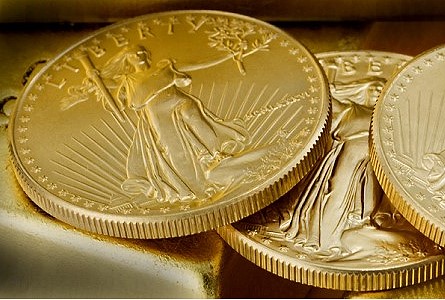by Louis Golino for CoinWeek.com
One of the purposes of this column is to provide readers with coverage and analysis of the constantly evolving markets for precious metals because those dynamics play such a big role in today’s coin market.
After a difficult fourth quarter of 2011 when metals declined sharply, prices have been rebounding recently, and gold in particular is in a consolidation phase, building a base of support in the $1600-1700 range.
 Silver and platinum have been underperforming compared to gold, although both are off their recent lows of roughly $26 and $1400. At their current levels of roughly $30 and $1500 respectively, both white metals look like a bargain to me, especially if the economy continues to improve.
Silver and platinum have been underperforming compared to gold, although both are off their recent lows of roughly $26 and $1400. At their current levels of roughly $30 and $1500 respectively, both white metals look like a bargain to me, especially if the economy continues to improve.
As they were falling in price during the fall, commentators were again proclaiming the end of the gold bubble, or at least questioning whether gold had peaked, something which mainstream financial analysts do almost every time gold declines a few dollars.
In fact, most serious gold analysts, such as Jeffrey Nichols, a precious metals columnist for Coin World, believe gold will be several multiples of its current price in the coming years.
Mr. Nichols said recently that he thinks gold could see as much as a 50% gain in 2012 from the recent low of about $1580. “Prices of $3000, $4000, and even $5000 an ounce are very likely during the course of this long-lasting bull market, a bull market that still has years of life left to it,” according to Mr. Nichols, who regularly travels to China to speak on gold.
Europe and the Dollar
The decline in metals that took place after gold peaked in early September was driven by three main factors.
First, hedge funds and other institutional investors had to liquidate precious metals to cover losses in other asset classes that had not performed as well; second, such investors typically rebalance their portfolios at the end of a year; third, the European debt crisis resulted in a flight to quality, as investors sought the perceived safety of U.S. Treasury securities.
If the situation in Europe deteriorates, that will probably drive gold in particular to new highs, as wealthy Europeans seek to preserve their assets in the face of a declining euro.
The unusual circumstances that prevailed in the fall, when gold declined as concerns mounted about Europe, may be ending, and the more normal pattern of seeking refuge in gold, rather than the dollar, may return.
However, heightened volatility is widely expected. If the U.S. economy continues to rebound during the year, which is by no means assured, gold could face substantial temporary headwinds.
Meanwhile, both the Indian wedding season and the Chinese Lunar New Year are approaching, which helps underpin demand, since gold and silver are the most popular gifts for both occasions.
Inflation
Precious metals are often described as an inflation hedge more than anything, but I think the relationship between inflation and precious metals is more complex than most people realize. There is no reason gold and other precious metals can not increase in the absence of inflation, as has been the case for years now.
A reader commentary published in Numismatic News recently argued that because inflation is likely to remain low, metal prices will remain low, and silver may never even reach $50 again. The writer was responding to the almost constant talk one hears from some bullion watchers that hyperinflation is a looming threat in the U.S., a point most economist would dispute.
When it comes to inflation, one must distinguish between the short to medium-term and the longer-term outlook. I think one also has to make distinctions in terms of regions of the world since some currently face inflationary pressures, while others face deflationary prospects.
It is likely that while our economy is still getting back on its feet, which will take several more years at a minimum, inflation will continue to trend low within the U.S., and in Europe there are even concerns about deflation, as recession fears grow.
In China and other emerging market economies inflation has indeed trended higher in the last couple years, providing part of the impetus for gold and silver demand there, but inflation in China has begun to moderate in recent months.
It is also true that the U.S. government, through its calculation of the consumer price index, understates the real rate of inflation, probably to save money on entitlement programs that have cost of living adjustments based on the rate of inflation.
But that does not change the fact that there is little likelihood of high inflation, or especially of hyperinflation, in the short-term, though it could emerge at some point in the future, especially if the dollar continues losing purchasing power, or even collapses.
Quantitative easing
The hyperinflationists point to the two rounds of quantitative monetary easing the Federal Reserve has engaged in since the start of the current crisis and argue that all that money creation will lead to high inflation (which it may indeed, just not for some time).
In a slow economy in which people and companies are hoarding their cash, a lot of those extra dollars the Fed has printed are not circulating. They are sitting on the balance sheets of banks and corporations.
That partly explains why the monetary easing programs have not resulted in much inflation so far. The inflation we have seen has been primarily in energy costs, which are not part of what the government calls core inflation (something I have always found odd).
In fact, many gold bulls keep hoping the Fed will announce another round of quantitative easing, believing that is the sure path to higher prices.
More QE would indeed be bullish for metals because it will lead to further dollar depreciation and weakness, not because hyperinflation is on the horizon. But given all the controversy surrounding QE 1 and 2, the Fed will be very careful before undertaking QE 3, and is only likely to do that if the U.S. economy reverses course and conditions worsen substantially.
In Europe the prospects for monetary easing are much stronger, perhaps even inevitable, since it is probably the only way to deal with the debt crisis there, i.e., through reflation, or devaluation of existing debt. But that action will also lay the groundwork for the next crisis.
Interest rates
When it comes to understanding the precious metals markets and where metal prices appear to be headed, it is the interest rate, especially the yield on U.S. government debt and other supposedly safe bonds, that really matters, at least in the absence of serious inflationary pressures.
That is because if investors at some point down the road are able to receive a decent after-inflation return on assets which at least in their view are relatively risk-free, such as Treasury bonds, they will flock to them, which is likely to depress stock and metal prices. Riskier assets tend to underperform when interest rates rise.
But we are years away from any such development, and that is probably the main reason why most precious metal experts think the gold bull run will not end anytime soon. Gold should continue to do well as long as real interest rates (after inflation) remain negative. It is even possible that gold and other metals could rise after rates are substantially higher, depending on overall economic conditions.
In addition, new supplies from mine production will not be enough to satisfy expected future demand, as Mr. Nichols noted. And central bank purchases and long-term gold buyers in Asia are reducing the available supply of the metal.
Recent data out of China shows a record amount of gold was imported, as Chinese authorities seek to diversify their financial holdings. And it is illegal to export gold out of China.
The bottom line for gold and the rest of the precious metals complex in 2012 is they are widely expected to perform very well, but volatility will remain very high. Investors should expect declines of 20% like the recent one, or even more, but the trend line will likely still be up substantially in December.
 Louis Golino is a coin collector and numismatic writer, whose articles on coins have appeared in Coin World, Numismatic News, and a number of different coin web sites. His column for CoinWeek, “The Coin Analyst,” covers U.S. and world coins and precious metals. He collects U.S. and European coins and is a member of the ANA, PCGS, NGC, and CAC. He has also worked for the U.S. Library of Congress and has been a syndicated columnist and news analyst on international affairs for a wide variety of newspapers and web sites.
Louis Golino is a coin collector and numismatic writer, whose articles on coins have appeared in Coin World, Numismatic News, and a number of different coin web sites. His column for CoinWeek, “The Coin Analyst,” covers U.S. and world coins and precious metals. He collects U.S. and European coins and is a member of the ANA, PCGS, NGC, and CAC. He has also worked for the U.S. Library of Congress and has been a syndicated columnist and news analyst on international affairs for a wide variety of newspapers and web sites.




